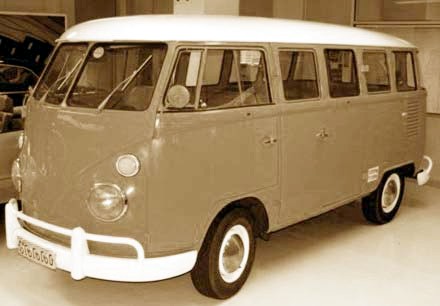What is the Fleetline Bus?
A lot of people in South Africa refer to any split windscreen Volkswagen bus as a Fleetline. In fact, the name Fleetline refers to a very specific split screen bus: the Brazilian split buses sold by VWSA as budget models for one year only, 1975.
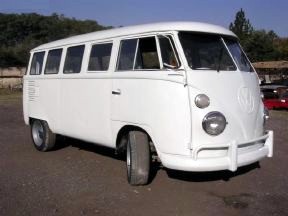
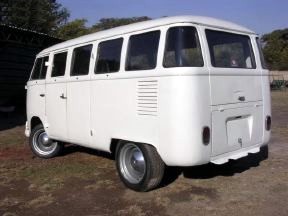
1975 VW Fleetline RHD
Fleetlines were assembled by VWSA from Brazilian-built kits, either CKD (completely knocked down) or SKD (semi knocked down). They were built for one year only, the 1975 model year. According to the Commercial Vehicle Data Digest:
• Fleetline introduced: January 1975
• Total number sold in 1975: 4,957
• Fleetline discontinued: March 1976
It’s unclear whether the number 4,957 is the total number of Fleetlines sold, or the total sold in 1975, in which case many more could have been sold until production ceased in March 1976.
Fleetlines came in three options: panel van, 15-Window Kombi and wide-body single cab pickup/bakkie. The range of colour options was similar to VWSA's standard 1975 catalogue. Panel vans and pick-ups came in one colour, and Kombis were two-tone - either white roof with colour below, or white roof and top half, with colour from the top of the swage line down. They did not pick out the swooping V swage line in two-tone the way German two-tone buses did.
Fleetlines were sold in VW showrooms as budget models alongside German-built 1975 bay windows.
Specifications across all three Fleetline models was purely commercial. Interiors featured brown vinyl seats and brown-painted masonite interior panels.
Brazilian Fleetlines consisted of a mix of early and late split parts:
• pre-55 style cargo doors, but mirror-image for RHD
• 58-style engine hatch, but with pushbutton lock
• early-type pull-out door handles
• pre-64 corner windows on Kombis
• small pre-64 rear hatch
• sway bar on front axle
• 12V alternator electrics
• 1600 DP engine
• big-nut transmission
They also had a few Brazilian modifications, such as a molded-in VW emblem on the front (probably to prevent theft) and no slots in the dash for the radio speaker (just three slots each side of the radio hole).
All parts came from Brazil except the window glass, which was manufactured in South Africa.
The instruments (speedo and fuel gauge) were also Brazilian, but made by VDO.
Fleetlines:
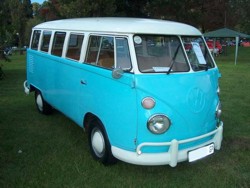
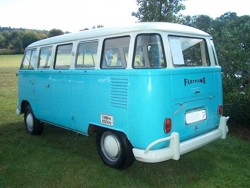
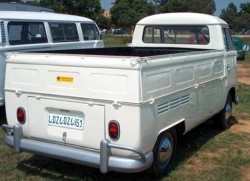
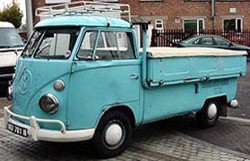
In 1976 VWSA replaced the Fleetline at the bottom of its bus range with the later Brazilian bay/split hybrid, known as "1600" or "Brasilia". These were assembled and sold in South Africa from 1976-1978. They were technically and mechanically the same, except they had the 1972-1978 rear lights and a bay window front attached to the original splittie rear body. They had reduction gearbox transmissions, but with double-jointed axles, and universal joints instead of CVs.
Bay/Split Window:
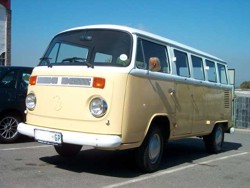
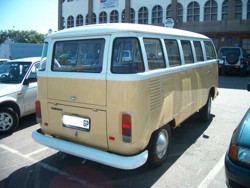
VWSA used the name "Fleetline" only for the 1975 Brazilian splits, not for any German-built splits and not for the fugly bay/split hybrids.


1975 VW Fleetline RHD
Fleetlines were assembled by VWSA from Brazilian-built kits, either CKD (completely knocked down) or SKD (semi knocked down). They were built for one year only, the 1975 model year. According to the Commercial Vehicle Data Digest:
• Fleetline introduced: January 1975
• Total number sold in 1975: 4,957
• Fleetline discontinued: March 1976
It’s unclear whether the number 4,957 is the total number of Fleetlines sold, or the total sold in 1975, in which case many more could have been sold until production ceased in March 1976.
Fleetlines came in three options: panel van, 15-Window Kombi and wide-body single cab pickup/bakkie. The range of colour options was similar to VWSA's standard 1975 catalogue. Panel vans and pick-ups came in one colour, and Kombis were two-tone - either white roof with colour below, or white roof and top half, with colour from the top of the swage line down. They did not pick out the swooping V swage line in two-tone the way German two-tone buses did.
Fleetlines were sold in VW showrooms as budget models alongside German-built 1975 bay windows.
Specifications across all three Fleetline models was purely commercial. Interiors featured brown vinyl seats and brown-painted masonite interior panels.
Brazilian Fleetlines consisted of a mix of early and late split parts:
• pre-55 style cargo doors, but mirror-image for RHD
• 58-style engine hatch, but with pushbutton lock
• early-type pull-out door handles
• pre-64 corner windows on Kombis
• small pre-64 rear hatch
• sway bar on front axle
• 12V alternator electrics
• 1600 DP engine
• big-nut transmission
They also had a few Brazilian modifications, such as a molded-in VW emblem on the front (probably to prevent theft) and no slots in the dash for the radio speaker (just three slots each side of the radio hole).
All parts came from Brazil except the window glass, which was manufactured in South Africa.
The instruments (speedo and fuel gauge) were also Brazilian, but made by VDO.
Fleetlines:




In 1976 VWSA replaced the Fleetline at the bottom of its bus range with the later Brazilian bay/split hybrid, known as "1600" or "Brasilia". These were assembled and sold in South Africa from 1976-1978. They were technically and mechanically the same, except they had the 1972-1978 rear lights and a bay window front attached to the original splittie rear body. They had reduction gearbox transmissions, but with double-jointed axles, and universal joints instead of CVs.
Bay/Split Window:


VWSA used the name "Fleetline" only for the 1975 Brazilian splits, not for any German-built splits and not for the fugly bay/split hybrids.
